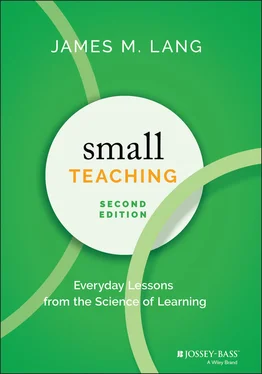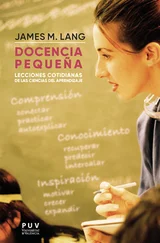My own acquaintance with small ball comes from a less dramatic story than the one the Kansas City Royals engineered in fall 2014. I have five children and live in a New England city where love for baseball runs deep. For 15 years I sat on uncomfortable metal benches for 2 months every late spring and watched my children play various levels of softball and baseball in our city leagues. The particular league to which my children belonged was a long-standing one; many of the coaches played in the league when they were children. These coaches frequently took the games quite seriously, perhaps in an effort to recapture the glory of their childhood playing days. As a result, they scouted and selected the best players every year who were coming up from the younger leagues and thus left newer or inexperienced coaches to draft their teams from a much depleted talent pool. Yet, despite the advantages that these more aggressive coaches gained in recruiting the top players, they didn't always win. In little league as in the major leagues, the coaches who seemed to have the greatest success were the ones who focused their attention—and the attention of their players—on mastering all of the small elements of the game. Small-ball coaches would signal their base runners to steal when the fielders were haphazardly tossing the ball around the infield, or they would ensure that someone was always backing up a throw to first base in case the first-base person dropped the ball. Since nobody was bashing home runs out of the park on a softball team of 8-year-olds, small ball represented the only guaranteed strategy for long-term success in these youth leagues.
The idea for this book began to percolate at the end of one of those long softball seasons, as I was preparing for a round of fall visits to other college campuses in support of my previous book, Cheating Lessons , which was focused on how we can reduce cheating and promote academic integrity in higher education. When I first began giving presentations on this topic, I relished the chance to speak to my fellow college and university teachers about major transformations they could make to their courses. Unfortunately, I was usually making such visits during the middle of a semester, which meant that workshop participants had to wait until the following semester to implement any of my suggestions. Even instructors with the best of intentions to revitalize their teaching might find it challenging to carry what they had learned in a two-hour workshop in October to their course planning in January or August, given all the work that would occupy their minds in the interim. More fundamentally, sudden and dramatic transformation to one's teaching is hard work and can prove a tough sell to instructors with so many time-consuming responsibilities. As a working instructor myself, I teach courses in literature and writing every semester, so I know full well the depth of this challenge. As much as I frequently feel the urge to shake up my teaching practices with radical new innovations, I mostly don't. Reconceiving your courses from the ground up takes time and energy that most of us have in short supply in the middle of the semester, and that we usually expend on our research or service work during the semester breaks.
My reflections on this dilemma led me to consider whether I should incorporate into my workshops more activities that instructors could turn around and use in their classrooms the next morning or the next week without an extensive overhaul of their teaching—the pedagogical equivalents, in other words, of small ball. With that prospect in mind, I dove into the literature of teaching and learning in higher education with new eyes, seeking small-ball recommendations that were both easy to implement and well-supported by the research. Over the course of many months this search led me through the work of cognitive psychologists who study the mechanics of learning, to neuroscientists and biologists who helped me understand some basic aspects of brain science, and to research in learning-related fields such as emotions and motivation. I was pleasantly surprised to find in these fields a manageable number of learning principles that seemed readily translatable into higher education classrooms. Gradually I began searching for practical examples of how these principles could operate in the classroom, and I began recommending some of the strategies I was discovering to participants in my workshops. I could feel the energy and excitement rising in the room whenever participants could see a short road between a late afternoon workshop and a concrete and positive change that they could make in their classes the next morning. But nothing made me more interested and excited than the small successes I experienced when I incorporated some of the strategies I had learned about into my own classroom. Over the course of that fall semester, as I both worked on my own teaching and spoke with other instructors about these ideas, I became convinced of the seemingly paradoxical notion that fundamental pedagogical improvement was possible through incremental change—in the same way that winning the World Series was possible through stealing bases and hitting sacrifice fly balls.
This newfound conviction ultimately gave rise to the notion of small teaching , an approach that seeks to spark positive change in higher education through small but powerful modifications to our course design and teaching practices. Small teaching as a fully developed strategy draws from the deep well of research on learning and higher education to create a deliberate, structured, and incremental approach to changing our courses for the better. The past several decades have brought us a growing body of research on how human beings learn, and a new generation of scholars in those fields has begun to translate findings from the laboratories of memory and cognition researchers to the higher education classrooms of today. Their findings increasingly suggest the potency of small shifts in how we design our courses, conduct our classrooms, and communicate with our students. Some of the findings may also suggest pathways to change that arise from dramatic transformation to our courses, and I applaud those innovators who are pointing us down those routes. But if we are seeking to boost our students' learning of course content, to improve their basic intellectual skills—such as writing, speaking, and critical thinking—and to prepare them for success in their careers, then I believe we can find in small teaching an approach to our shared work of educating students that is effective for our students and accessible to the largest number of working college and university teachers.
Widespread accessibility to working teachers matters a great deal, especially if we consider the incredibly diverse range of contexts in which higher education operates these days. Teaching innovations that have the potential to spur broad changes must be as accessible to underpaid and overworked adjuncts as they are to tenured faculty at research universities. They must find a home on the campus of a small liberal arts college as easily as they do on the commuter campuses of regional comprehensives. They must offer something to traditional lecturers in big rooms and to discussion leaders in small seminars. They should be as available to us in ordinary times as they are in the midst of a pandemic. The activities outlined in this book, taken as a whole, fulfill these directives: with a little bit of creative thinking, they can translate into every conceivable type of teaching environment in higher education, from lectures in cavernous classrooms to discussions in small seminar rooms, from fully face-to-face to fully online courses and every blended shade between. They stem from very basic principles of how human beings learn and hence cross both discipline and content type—whether you are teaching students to memorize facts or formulae, to develop their speaking or writing skills, or to solve complex and wicked problems. Not every instructor in every discipline in every teaching context will find a space for all of the small teaching activities outlined here, but every reader should find opportunities to use at least some of them. You can implement them tomorrow morning, next week on Friday, in the design of your next quiz or test, and even in the next e-mail you send to your students.
Читать дальше












